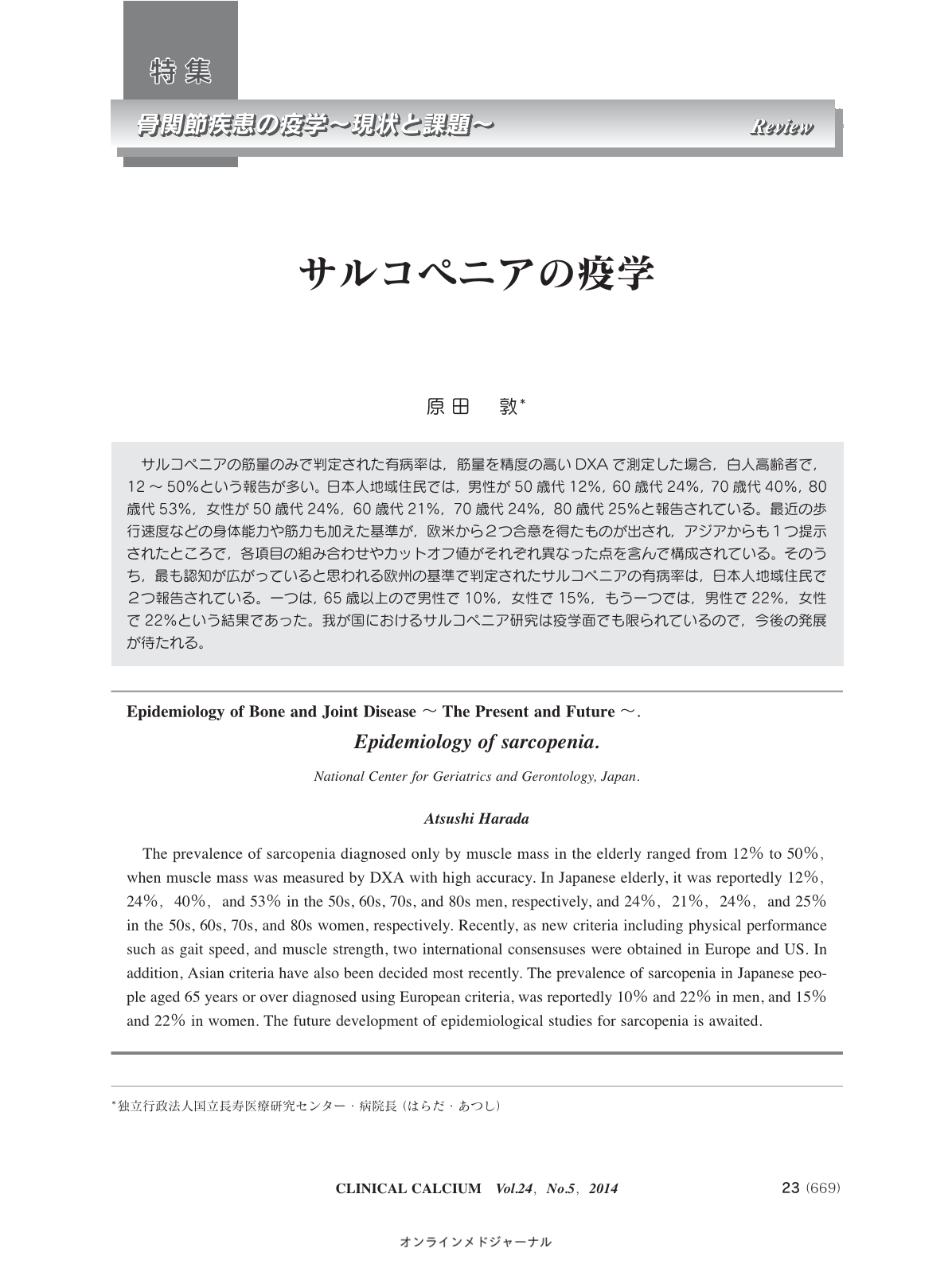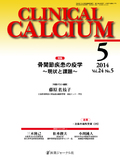Japanese
English
- 有料閲覧
- Abstract 文献概要
- 1ページ目 Look Inside
- 参考文献 Reference
サルコペニアの筋量のみで判定された有病率は,筋量を精度の高いDXAで測定した場合,白人高齢者で,12~50%という報告が多い。日本人地域住民では,男性が50歳代12%,60歳代24%,70歳代40%,80歳代53%,女性が50歳代24%,60歳代21%,70歳代24%,80歳代25%と報告されている。最近の歩行速度などの身体能力や筋力も加えた基準が,欧米から2つ合意を得たものが出され,アジアからも1つ提示されたところで,各項目の組み合わせやカットオフ値がそれぞれ異なった点を含んで構成されている。そのうち,最も認知が広がっていると思われる欧州の基準で判定されたサルコペニアの有病率は,日本人地域住民で2つ報告されている。一つは,65歳以上ので男性で10%,女性で15%,もう一つでは,男性で22%,女性で22%という結果であった。我が国におけるサルコペニア研究は疫学面でも限られているので,今後の発展が待たれる。
The prevalence of sarcopenia diagnosed only by muscle mass in the elderly ranged from 12% to 50%,when muscle mass was measured by DXA with high accuracy. In Japanese elderly, it was reportedly 12%,24%,40%,and 53% in the 50s, 60s, 70s, and 80s men, respectively, and 24%,21%,24%,and 25% in the 50s, 60s, 70s, and 80s women, respectively. Recently, as new criteria including physical performance such as gait speed, and muscle strength, two international consensuses were obtained in Europe and US. In addition, Asian criteria have also been decided most recently. The prevalence of sarcopenia in Japanese people aged 65 years or over diagnosed using European criteria, was reportedly 10% and 22% in men, and 15% and 22% in women. The future development of epidemiological studies for sarcopenia is awaited.



